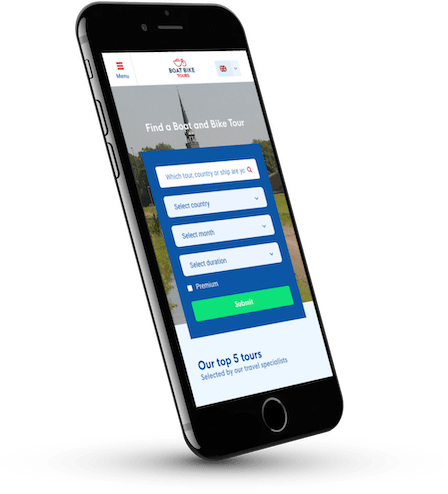Ever heard of Sinterklaas? No? In the Netherlands, children spend the whole month of November looking forward to this big day, setting shoes filled with carrots by the door and watching the Sinterklaas news on TV every evening.
In this blog you can find out all about this Dutch festival, which keeps the whole county in suspense for weeks, and why Dutch children look forward to it more than Christmas.
1. Who or what is Sinterklaas?
Sinterklaas, also called Sint for short, is the Dutch version of St Nicholas: a kind, elderly gentleman with a long white beard, a red coat and a bishop’s cap on his head. While Christmas in the Netherlands is more about having a family feast, Sinterklaas is the big gift-giving festival that is so eagerly anticipated by children.

2. When is Sinterklaas celebrated?
Sinterklaas is celebrated on the evening of 5 December. This evening is also called Pakjesavond because of the many gift packages. In the Netherlands, by the way, this is a normal working day. But many people leave work early to spend the evening with family and friends.
3. How is Sinterklaas celebrated?
Sometime on the evening of 5 December, there’s a knock at the door. By the time it’s opened, there’s no-one around, just a mysterious sack of presents. Good food is eaten, songs are sung, such as Sinterklaas Kapoentje (“Captain Sinterklaas”) or Zie Ginds Komt de Stoomboot (“See Yonder Steamboat Coming”), and among the traditional gifts are chocolate letters. Everyone receives the first letter of their name in chocolate form.

4. What happens if you don’t believe in Sinterklaas?
Sinterklaas is not just about receiving gifts in your shoe from the man himself. Many adults, and older kids who may not believe in Sinterklaas any more, do a Kris Kringle-style lottery to see who they’ll give a present (or surprise) to. This is not just at home with the family, but can also be organized among friends, colleagues or at school.
With this custom, the real surprise is not the gift itself, but the imaginative, often elaborately crafted cardboard packaging. Every gift comes with a small poem, composed by the giver, which the recipient reads out loud before unpacking. Take note! It’s common practice to poke fun at the recipient, so don’t be upset if your flaws are pointed out – it’s all in good fun.
5. Why does Sinterklaas have a ship?
Sinterklaas needs a ship because he spends most of the year in Spain, where he lives in a big house together with his helpers, the Pieten. Once a year he makes his way to the Netherlands together with the Pieten, his white horse and lots of presents. And he travels on a big old steamboat, called Pakjesboot 12.
In mid-November the spectacular arrival of Sinterklaas is celebrated in many cities with a big parade. Sint rides his white horse through the streets, while the Pieten distribute small gifts and pepernoten (tiny round spice cookies).
Sinterklaas is always accompanied by his helpers, always named Piet (The plural is PIeten). In the past, the Pieten wore blackface to look like “Moors” from Spain. Nowadays that practice is disappearing and, instead, the Pieten have smears of soot on their faces from sliding down chimneys!

6. Why do children put a carrot in their shoes at night?
When Sinterklaas is in the country, children can set their shoes out in the evening. If they’re lucky and have been good, the Pieten visit during the night and fill the shoes with presents and sweets. Sinterklaas is also happy when he finds shoes with a carrot for his horse or a painted picture.
By the way, the tradition of putting your shoe out is a very old one. In the Middle Ages, the poor would leave their shoes in the church on the evening of 5 December. On the day of Saint Nicholas (6 December) they would find coins inside, donated by wealthier parishioners.
7. What is the Sinterklaasjournaal?
Sinterklaas even has its own news program in the Netherlands! In the weeks leading up to the big festival, kids can watch the Sint’s travels on his steamboat on TV every evening, as well as behind-the-scenes dramas and adventures of Sinterklaas and his Pieten as they prepare for the big day.
8. What about Santa Claus?
There’s no difference between Sinterklaas and Santa Claus, as it turns out. They’re both descended from St Nicholas. Santa Claus, who emerged in the USA in the 1800s, is actually an American verison of Sinterklaas. Dutch immigrants to 17th century New York – then known as New Amsterdam – brought the tradition with them.
Over time, the Dutch figure morphed into the new American form of Santa Claus, who delivers gifts to children on Christmas Eve instead of 5 December. Santa Claus eventually crossed the Atlantic again to the United Kingdom, where he merged with Father Christmas, before spreading to other parts of Europe.
Today in the Netherlands, Sinterklaas now competes with his alter ego, the Kerstman (Santa Claus). Despite this dichotomy, the Dutch Sinterklaas tradition is still going strong, and the amount of collective fun and anticipation he generates in the Netherlands is a spectacular sight to behold.
We wish you a joyful pre-Christmas time and a happy Sinterklaas!
Have you also got the desire for a relaxing vacation with bike and ship?
Our travel experts will be happy to help you find the perfect tour for you. Simply get in touch and request more information! With our free email course, you’ll be well prepared for your boat bike tour: Sign up and learn everything you need to know before booking!
Sign up for our free email course

